1.05.16
Inspired by Rose: Cranberry Cream Cheese Scone Thins
I became a big fan of Rose Levy Beranbaum when her first cookbook, The Cake Bible, came out in 1988; since then it has become a classic. As each of her many cookbooks were released, I kept buying them and continued to be an avid fan. I have baked many of Rose’s recipes, always with great success. Besides giving you great recipes, one of the things I appreciate the most is the way she writes the recipes: in addition to volume, the weights of all ingredients are given (in both ounces and grams), which is perfect for me because I like to bake in grams. I prefer metric weights for baking because I know that the final results will be consistent every time. Besides that, in my opinion, weighing the ingredients in grams is just simply easier and faster.
Recently, while browsing through her newest book, The Baking Bible, which was released at the end of last year (October 2014), my eye stopped on the page with a photo of what Rose calls “Scone Toppers”, which are thin, rectangular, almost cookie-like (or shortbread-like) versions of scones. What a great idea! What crunchiness! It is just one image, but I saw in it a lot of possibilities. I imagined adapting some of my best scone recipes for “Scone Thins” (my name, a name that just popped into my head for no reason). This collection of “Scone Thins” would include all sorts of favorite flavors: Cinnamon Streak, Orange Currant, Cinnamon Raisin Walnut, and Ginger (with crystallized ginger). I think a cheese version would be nice too: Gruyère Cheese Scone Thins. Inspired by Rose, I immediately got to work developing the recipe for the first of my collection: Cranberry Cream Cheese Scone Thins. I promise to share more recipes for Scone Thins in the future, but today is the very first one.
Cranberry Cream Cheese Scone Thins
I calibrated the recipe to make 3 ½ thin sheets of dough quarter sheet pan size (8 1/2” wide x 12” long x 3/8” thick), each one cut into 16 neat rectangles (2” x 3”), for a total of 56 Scone Thins. You can’t have too many of these! The recipe yields about 2000 grams (4 ½#) of dough, with each pan scaled at 570 grams (1 ¼#). This may seem like a lot, but this dough freezes well (up to one month) so you can bake off as desired. What I like to do is roll out the sheets of dough, stack them layered between parchment paper sheets in a quarter sheet pan, put the whole thing in a jumbo Ziploc plastic bag, and pop in the freezer, ready to bake at a moment’s notice.
When cutting squares or rectangles, whether it be dough, cake, brownies, or anything else in pastry, I prefer to use a 12″ C-Thru Graph Ruler or an 18” C-Thru Graph Ruler. These rulers are two inches wide, which makes it easy to use one as a marker and cut the scone dough, or anything else, into 2” strips, which is a good portion size. From there, you cut the strips as desired: in this case, into 3” pieces, for 2” x 3” rectangles.
If you prefer to make round “Scone Thins”, the recipe will make 42 – 2 ¾” rounds (plain or fluted), with scraps that you can bake off for snacking: 12 rounds per quarter-sheet of dough. You also have the option of cutting the dough into other shapes as well, such as triangles or squares. When I made the “Scone Thins” for this post, I cut part of the dough into rectangles and for the rest, I used a Matfer #70 fluted round cutter (2 ¾” diameter). (Note: I know Matfer cutters are an investment, but the range of sizes makes them useful for so many things: cookies, puff pastry, scones, scone thins. Plus, they last forever; I’ve been using mine for over twenty years.)
In addition to all of the flavor possibilities, the possibilities for what to do with “Scone Thins” are endless: #breakfastcookies, #coffeebreak, #teatime, #snacktime, or anytime you have the munchies and crave a little nibble with some crunchiness. Bake and enjoy a tray full of Scone Thins!
Step-by -Step:
Making Cranberry Cream Cheese Scone Dough by Hand
- Cold butter & cream cheese chunks
- Butter & cream cheese rubbed into flour to create large flakes.
- Adding the Liquids.
- Fold in the liquids until flour is half-absorbed.
- Scatter dried cranberries over the top.
- Mix with rubber spatula until dough comes together.
- Scale the dough into 570g (1 1/4#) portions.
- Pat out the dough into a small 6″ x 8″ rectangle.
- Fold dough in half.
- Repeat folding procedure two more times.
- Cover with plastic wrap and roll out on floured quarter-size parchment paper (8″ x 12″).
- Place dough sheets (with parchment paper & plastic wrap still intact) on quarter-sheet pan. Freeze before cutting.
Scone Thins: How to Cut Rectangles
- Use a C-thru ruler to cut 2″ x 3″ rectangles
- Lift onto parchment-lined half-sheet pan.
- All cut.
- Cranberry Cream Cheese Scone Thins ready for topping of cream & sparkling sugar.
- A baked “Scone Thin”.
- Ready for coffee break, teatime, or just a snack.
- #breakfastcookies.
- Tray of Cranberry Cream Cheese Scone Thins
Scone Thins: Cutting Fluted Rounds
- Cutting with a #70 Matfer fluted round cutter (2 3/4″ diameter). Or, use a plain round cutter the same size.
- Arranged on parchment-lined half-sheet pan.
- Topping: Brush with heavy cream. Option: Sprinkle with sparkling sugar.
- Finished Cranberry Cream Cheese SconeThins.

Cranberry Cream Cheese Scone Thins
YIELD: NET WEIGHT OF DOUGH = 2000 grams (4# 6 oz)
56 - 2" x 3" RECTANGLES (About 35g each)
OR: 42 - 2 3/4" ROUNDS (About 30g each)
Ingredients
- 490 grams all-purpose unbleached flour King Arthur (3 1/2 cups)
- 280 grams bleached all-purpose floiur Gold Medal (2 cups)
- 200 grams sugar 1 cup
- 40 grams baking powder 2 Tablespoons + 2 teaspoons
- 10 grams fine sea salt 2 teaspoons
- 225 grams cold unsalted butter cut in 3/8" chunks (2 sticks)
- 225 grams cold Philadelphia cream cheese cut in 3/8" chunks (one - 8 ounce package)
- 240 grams heavy cream 1/2 pint / 1 cup
- 100 grams whole eggs 2 large
- 240 grams dried cranberries 1 1/2 cups
- 2050 grams = Total 72 oz 4# 8 oz
- TOPPING:
- Brush tops of unbaked scone thins with heavy cream and sprinkle with sparkling sugar.
- Or omit the sugar, and just brush tops with cream.
Instructions
- COMBINE dry ingredients a large mixing bowl. Whisk to blend.
- ADD cold butter and cream cheese chunks to the flour and rub between your hands creating large flakes. Continue rubbing until mixture is mealy with some remaining butter / cream cheese chunks the size of small peas.
- WHISK together the heavy cream and eggs and stir in until the flour is half absorbed, using a large rubber spatula.
- SCATTER dried cranberries over the top and mix in.
- PRESS dough together in the bowl, scraping up loose flour from the bottom.
- SCALE into three portions 570 grams (20 ounces / 1 1/4#) each and one portion 285 grams (10 ounces). (Note: this recipe makes 3 1/2 sheets of dough - Quarter Sheet size 8" x 12" x 3/8" thick).
- FOR EACH DOUGH PORTION: PRESS into a small rectangle about 6" x 8" on a floured counter. Fold in half. Repeat two more times.
- TO ROLL OUT DOUGH SHEETS: PLACE each rectangle of dough onto a quarter-sheet (cut half sheets of parchment in half) of parchment paper sprinkled with flour. Cover the dough with a sheet of plastic wrap and roll out with rolling pin to the size of the parchment; the dough will be about 3/8" thick. This not only makes it easy to roll the dough to the correct size, but it allows you slide the rolled-out dough (with plastic wrap still intact) off the counter and into a quarter-sheet pan to freeze. The dough sheets may be stacked in the pan to save freezer space.
- FREEZE the dough sheets. This dough can be frozen for up to a month, so cut and bake off the Scone Thins as needed.
- REMOVE one sheet of frozen dough from the freezer at a time. Let rest at room temperature about 15 minutes, then cut into desired shape.
- FOR RECTANGLES: CUT a sheet of partially frozen dough crosswise into four 3" strips, then cut lengthwise into four 2" strips, creating 16 - 2" x 3" rectangles. For cutting, use a long slicing knife (or a pizza cutter) with a ruler as a guide.
- FOR ROUNDS: CUT a sheet of partially frozen dough using a 2 3/4" round cutter. I like to use a Matfer fluted round cutter #70, which is 2 3/4" in diameter, but you can also use a plain round cutter of the same size. When using a 2 3/4" cutter, each sheet of dough will yield 12 rounds. The scraps can be baked off for snacks.
- ARRANGE the Scone Thins on parchment-lined half sheet pans. Brush tops with heavy cream and sprinkle with sparkling sugar, if desired.
- BAKE @ 400° F (204° C) for 15 - 17 minutes, until golden brown.
- COOL on the pans.
- EQUIPMENT & SUPPLIES that I find helpful when making this recipe: 1) Digital Scale: I like this Escali scale; it is very durable and not too expensive 2) Sheet Pans: Quarter-size sheet pans (9 1/2" x 13", also called bun pans) for the dough sheets and Half-size sheet pans (13" x 18") for baking. Note: heavy-duty sheet pans don't warp. 3) Parchment Paper: Half-size parchment sheets (Cut them in half to use in the quarter sheet pans). 4) Long slicing knife or pizza cutter for cutting into rectangles.4) C-thru ruler: 12" C-Thru Graph Ruler or 18" C-Thru Graph Ruler. 5) 2 3/4" Round Cutter: Either plain round or Matfer #70 fluted round. Click here for a set of Matfer fluted cutters.
Notes

Thanks for stopping by. Enjoy!
Shirl
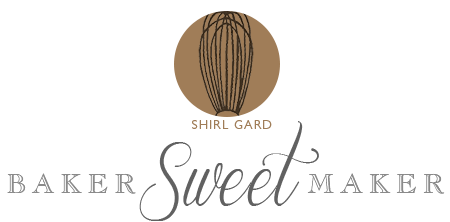
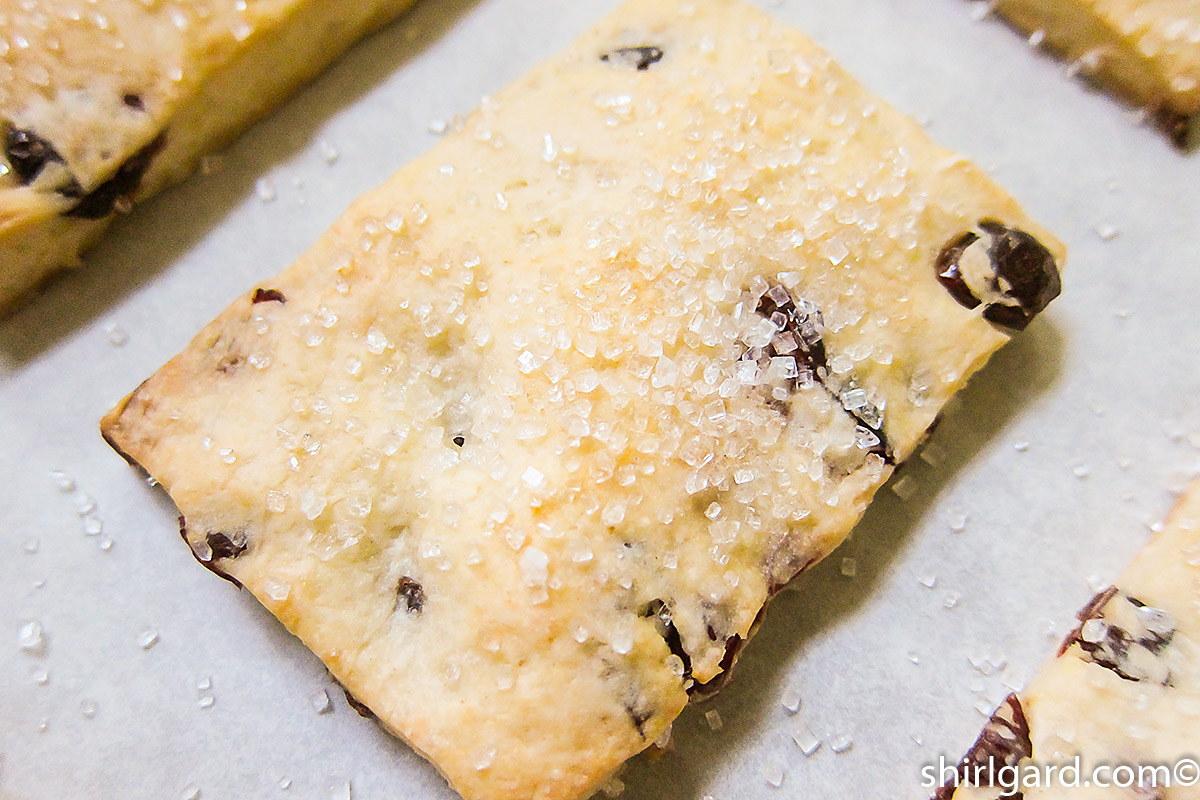
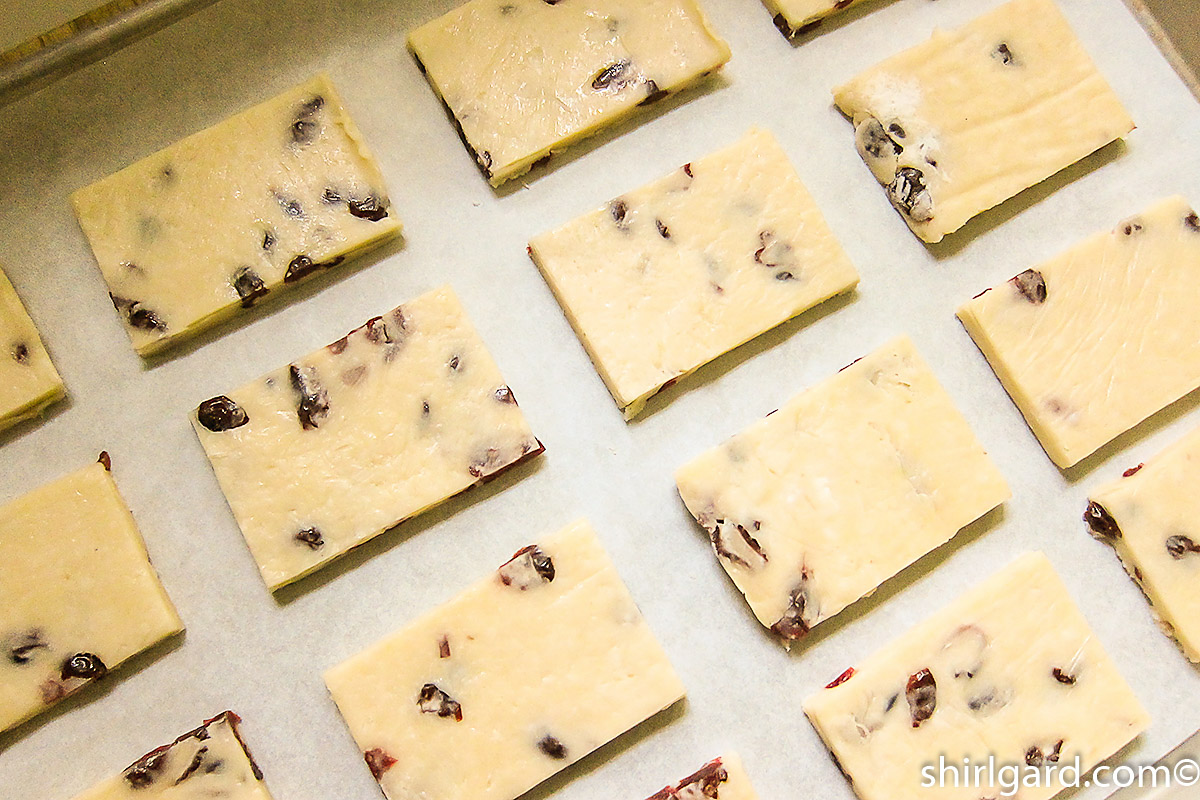
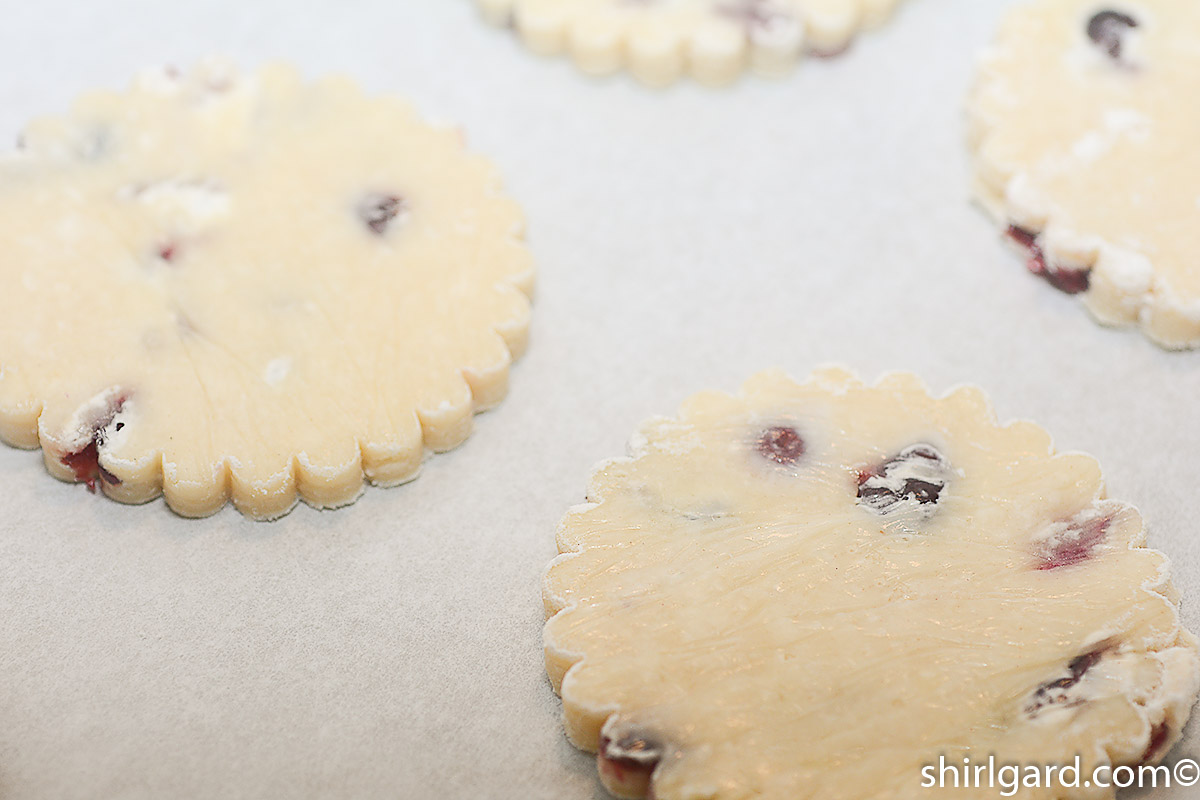
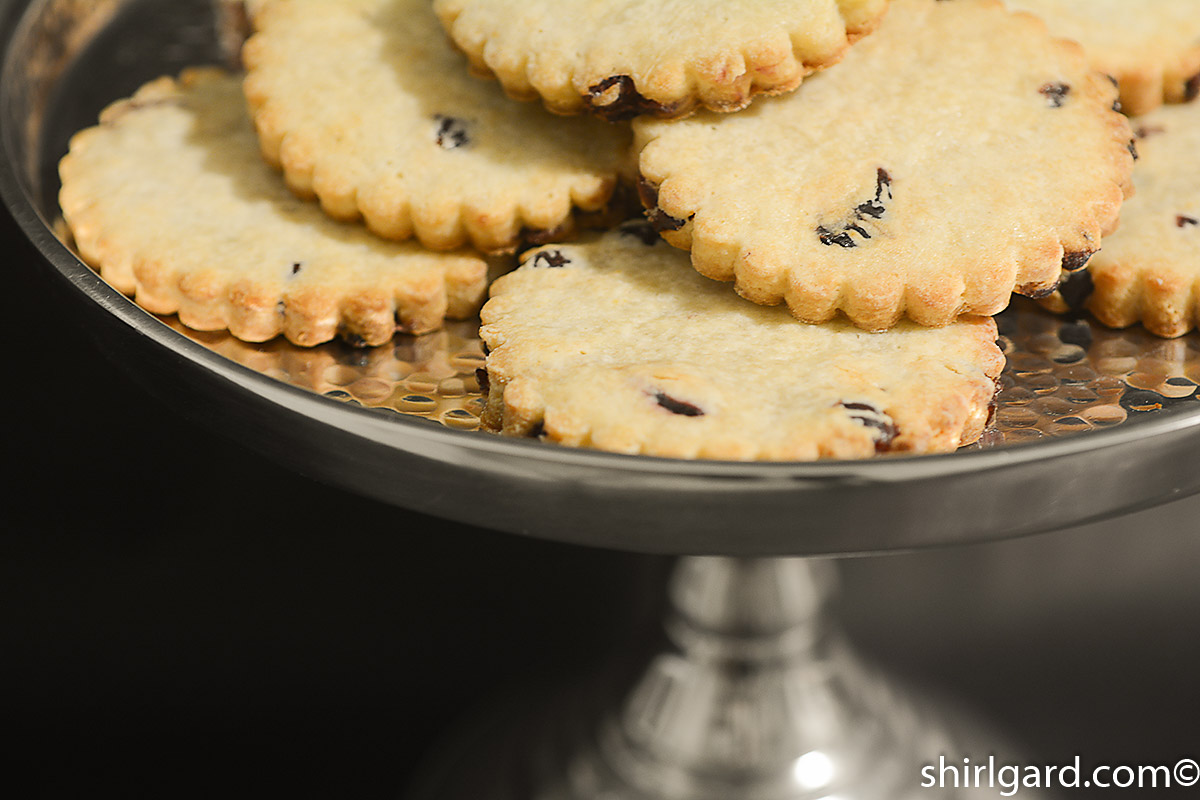
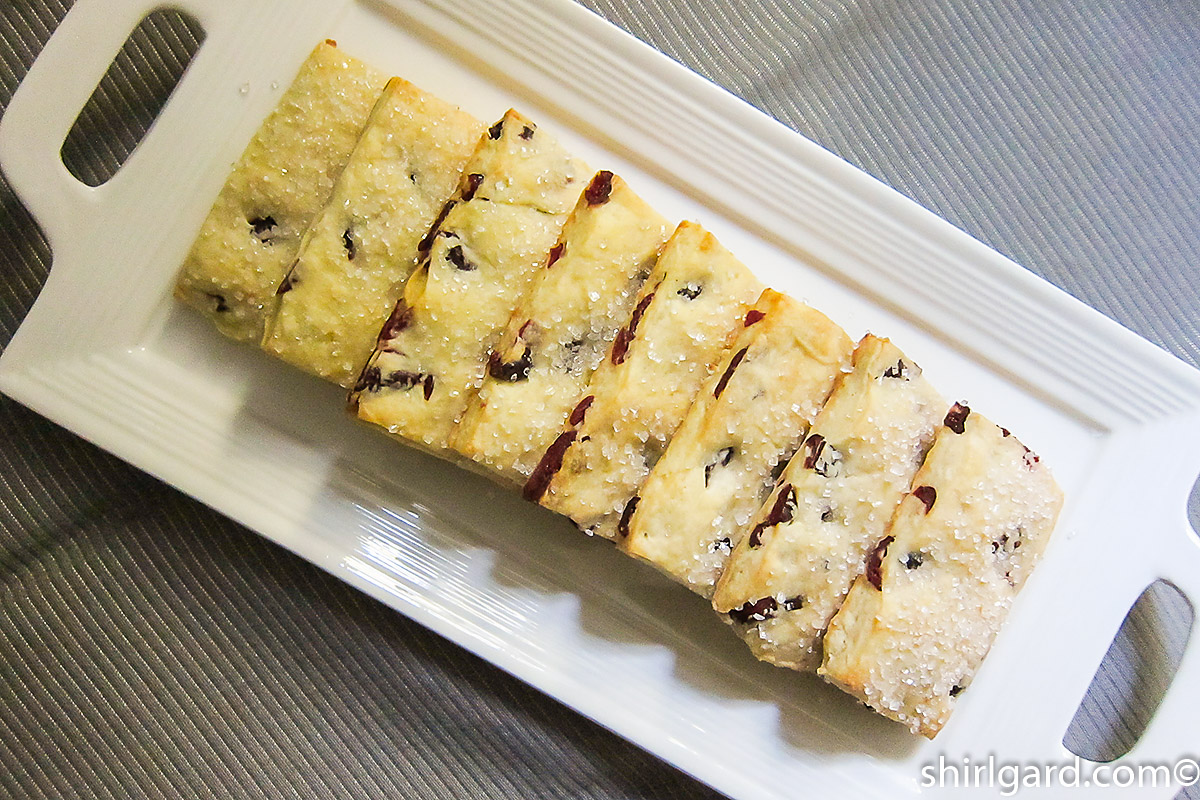
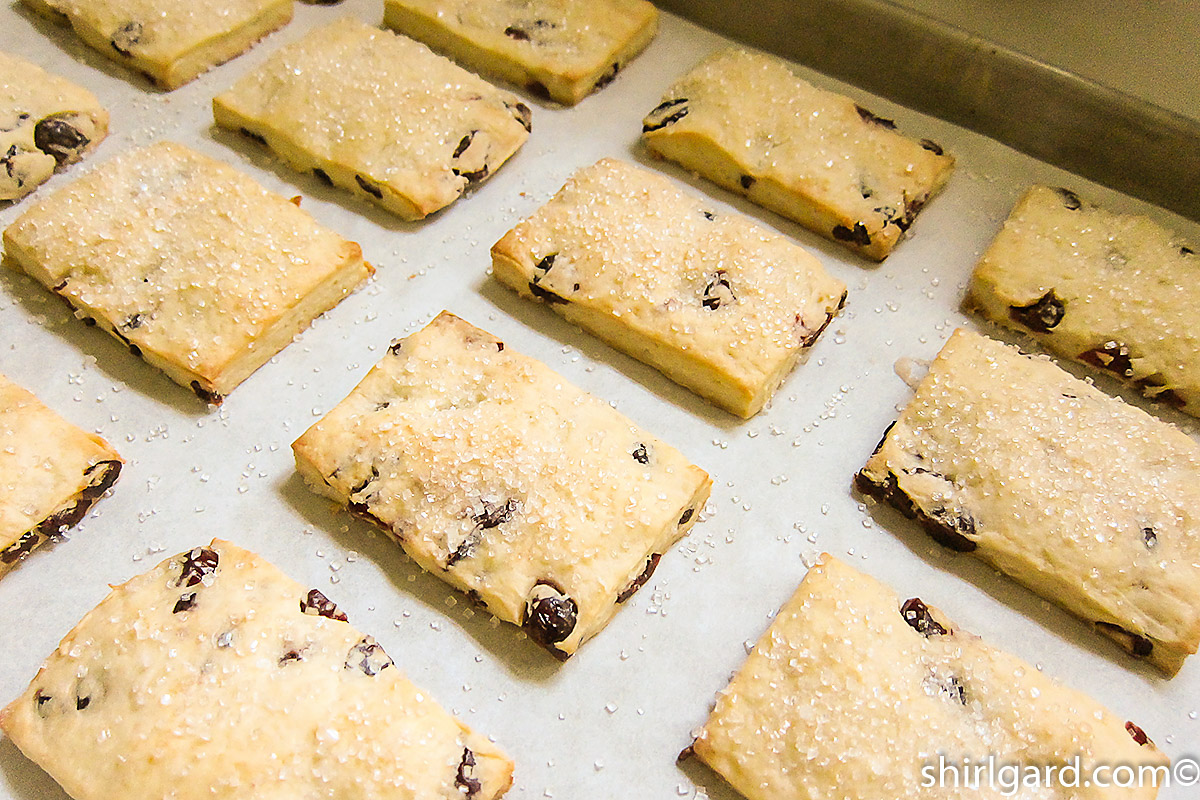

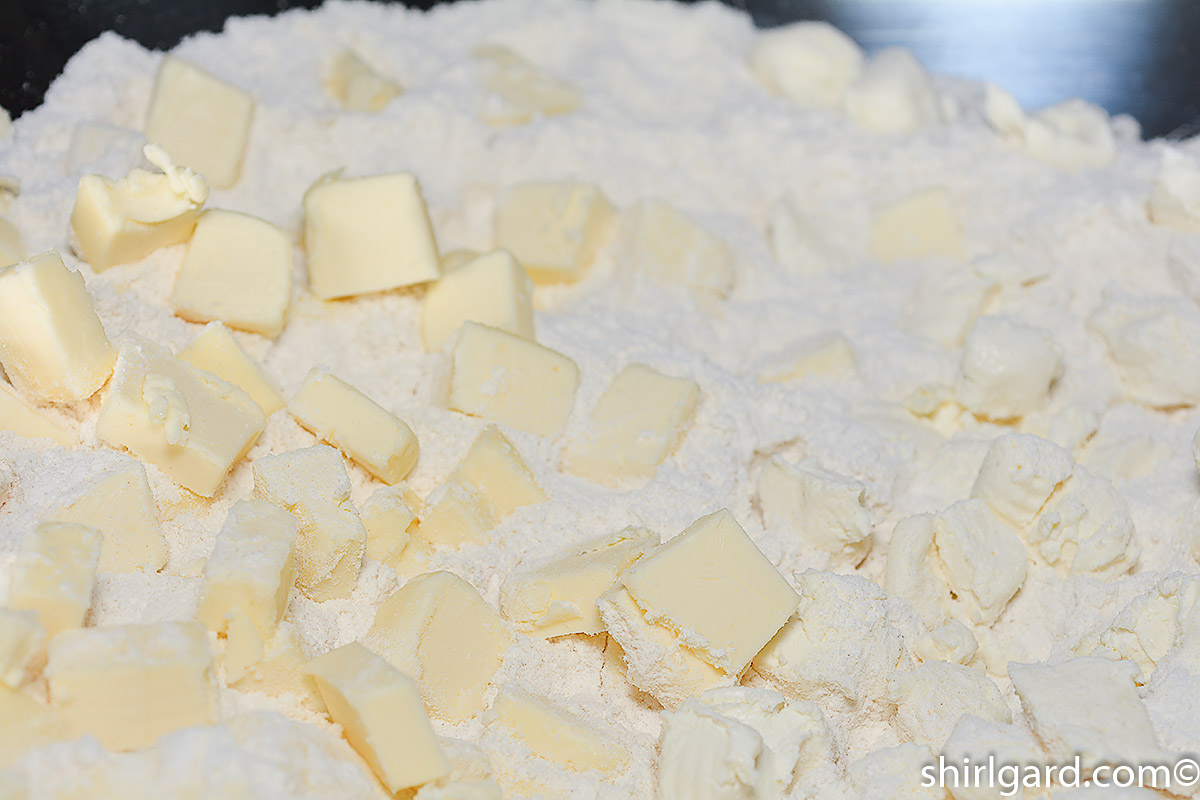
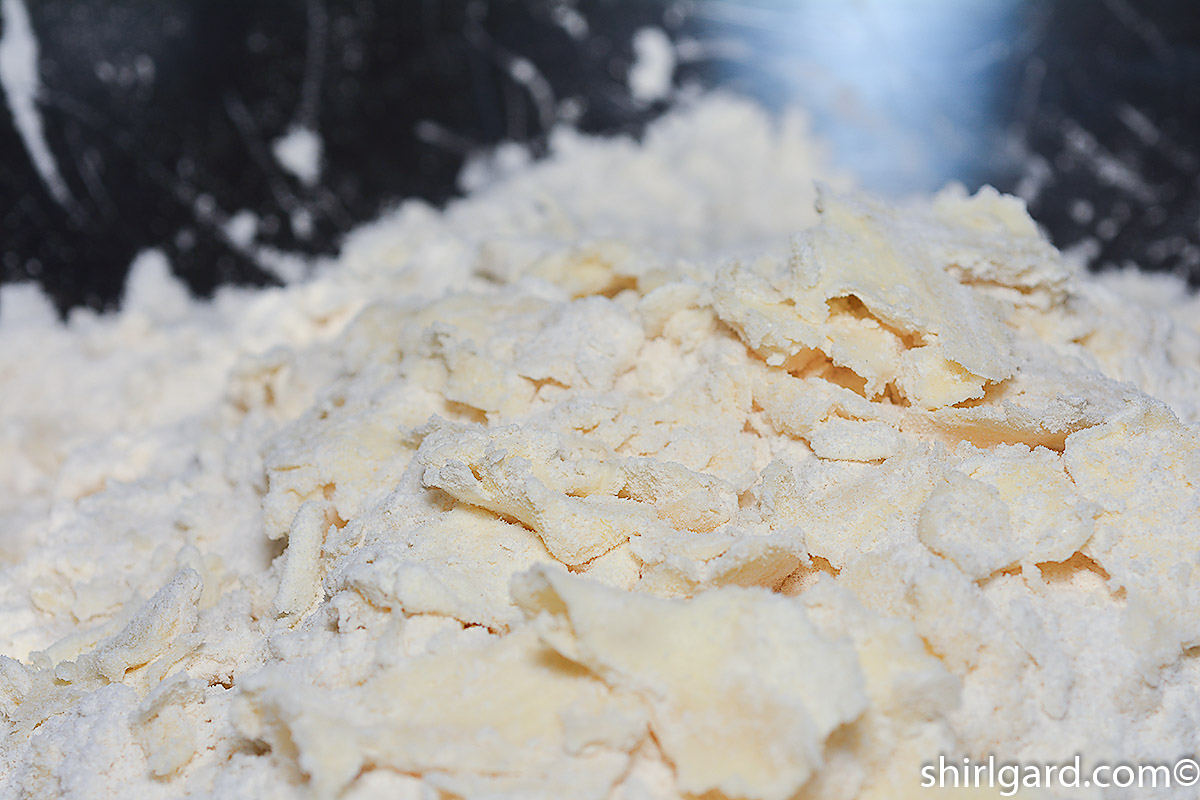
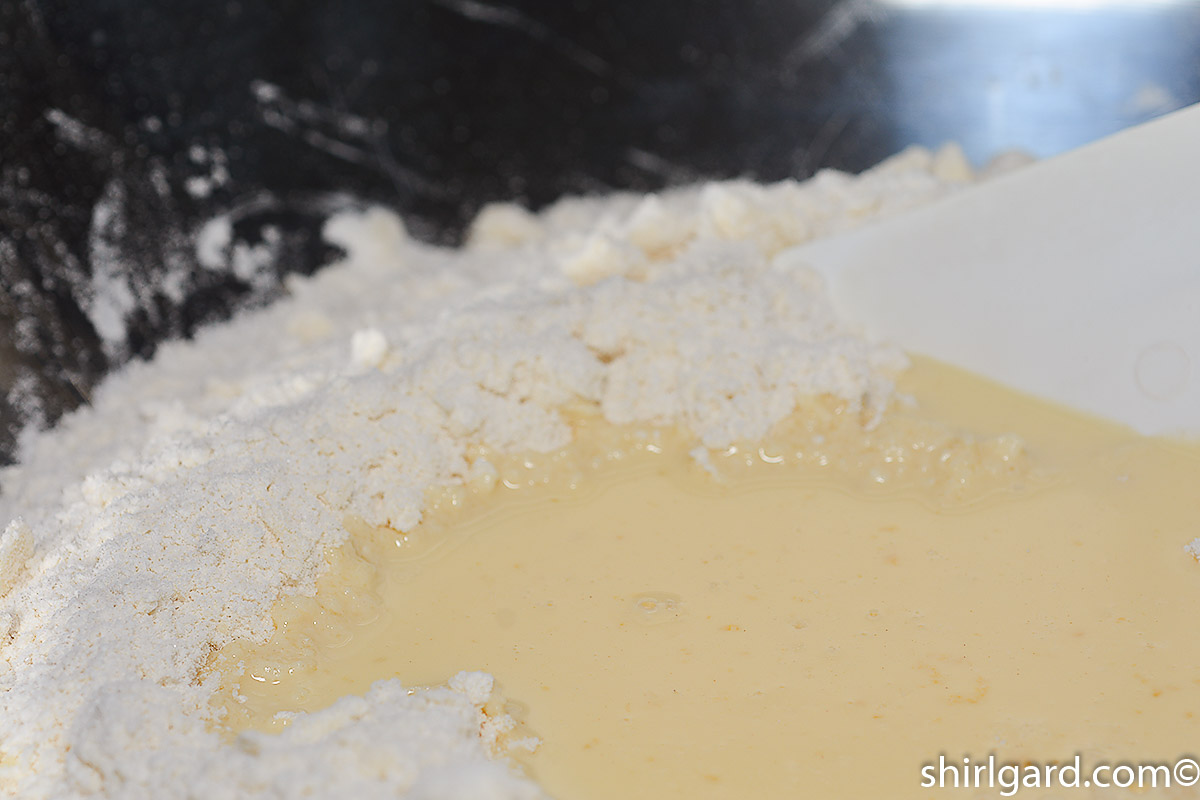

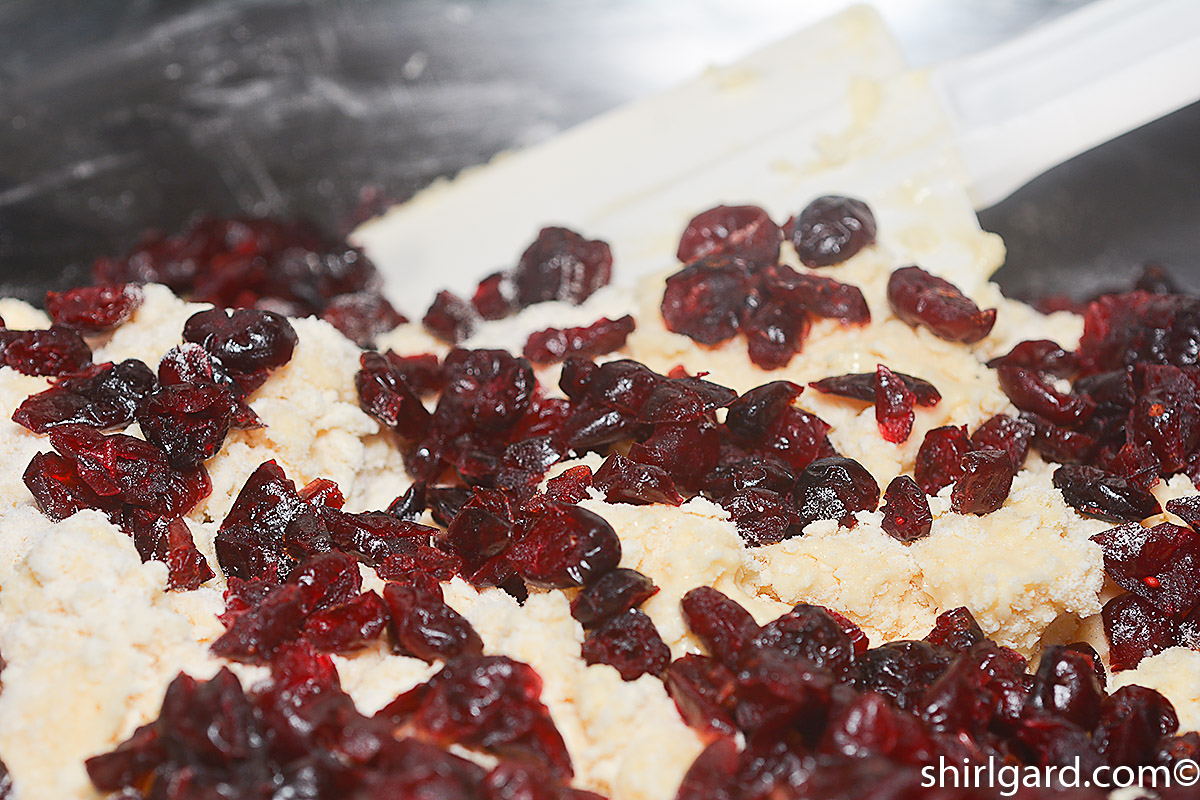
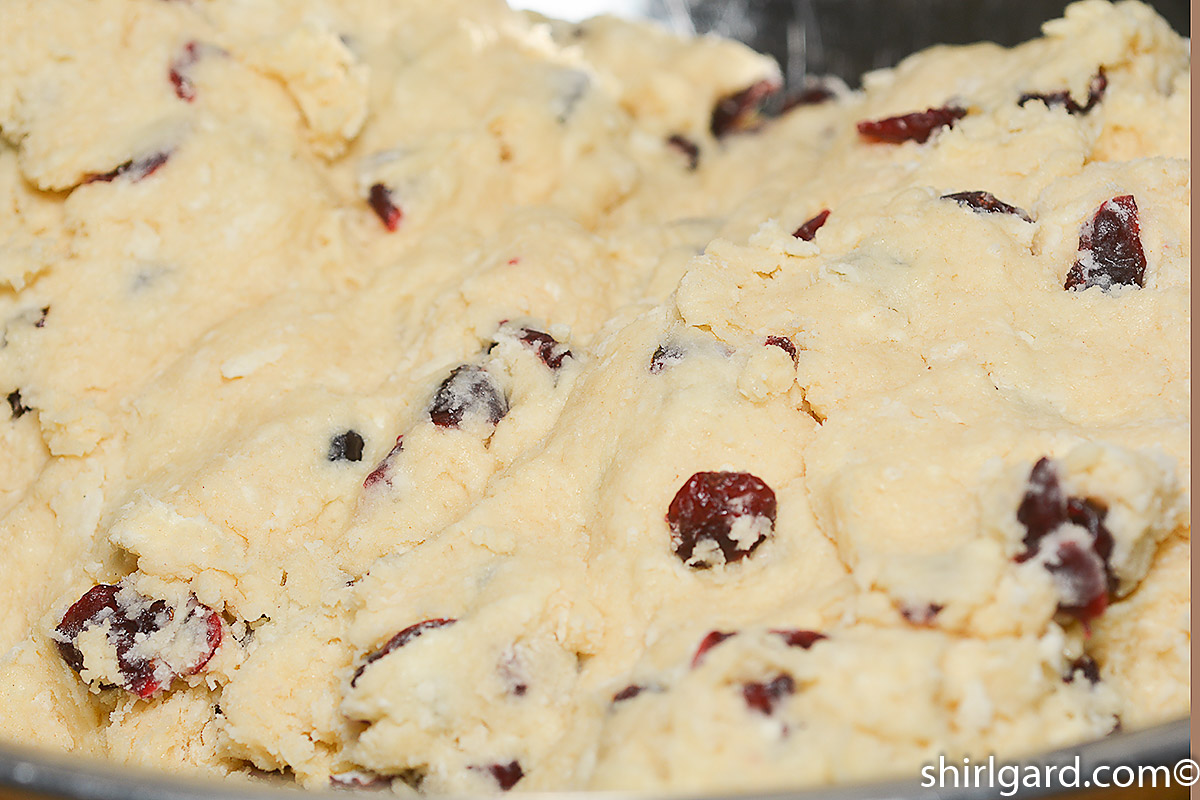
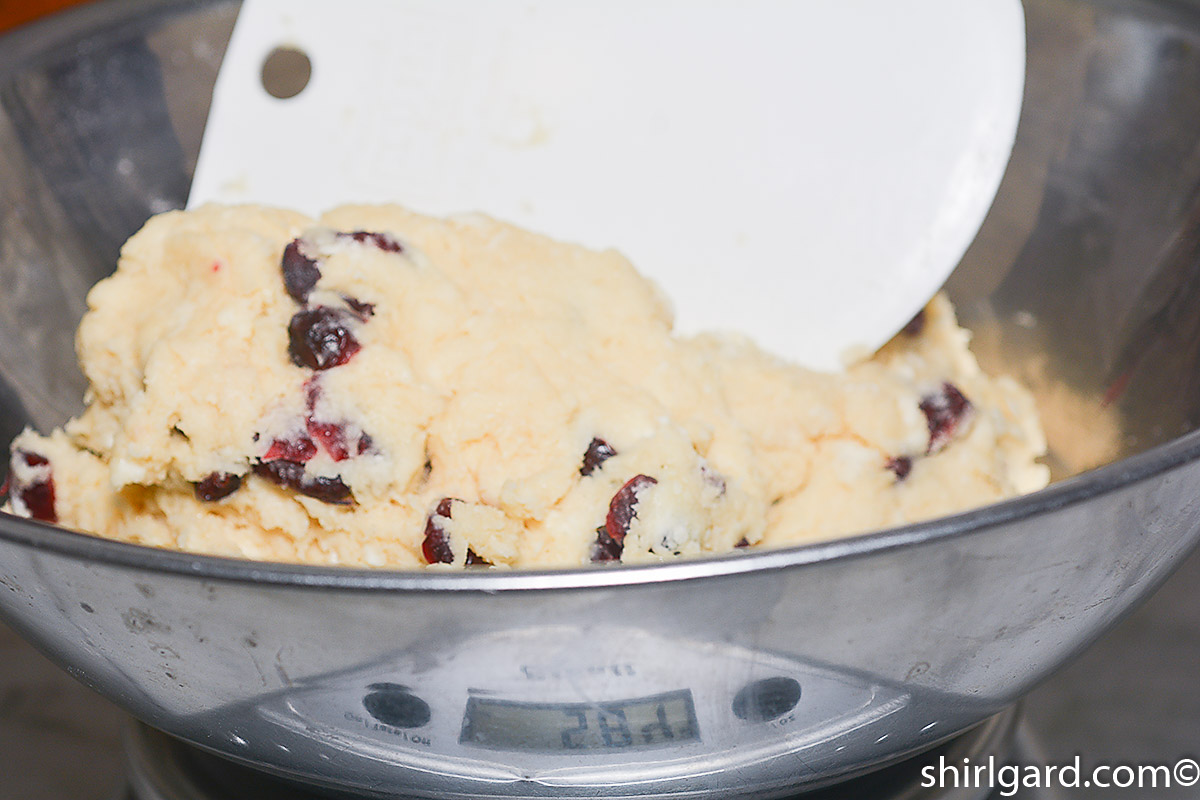
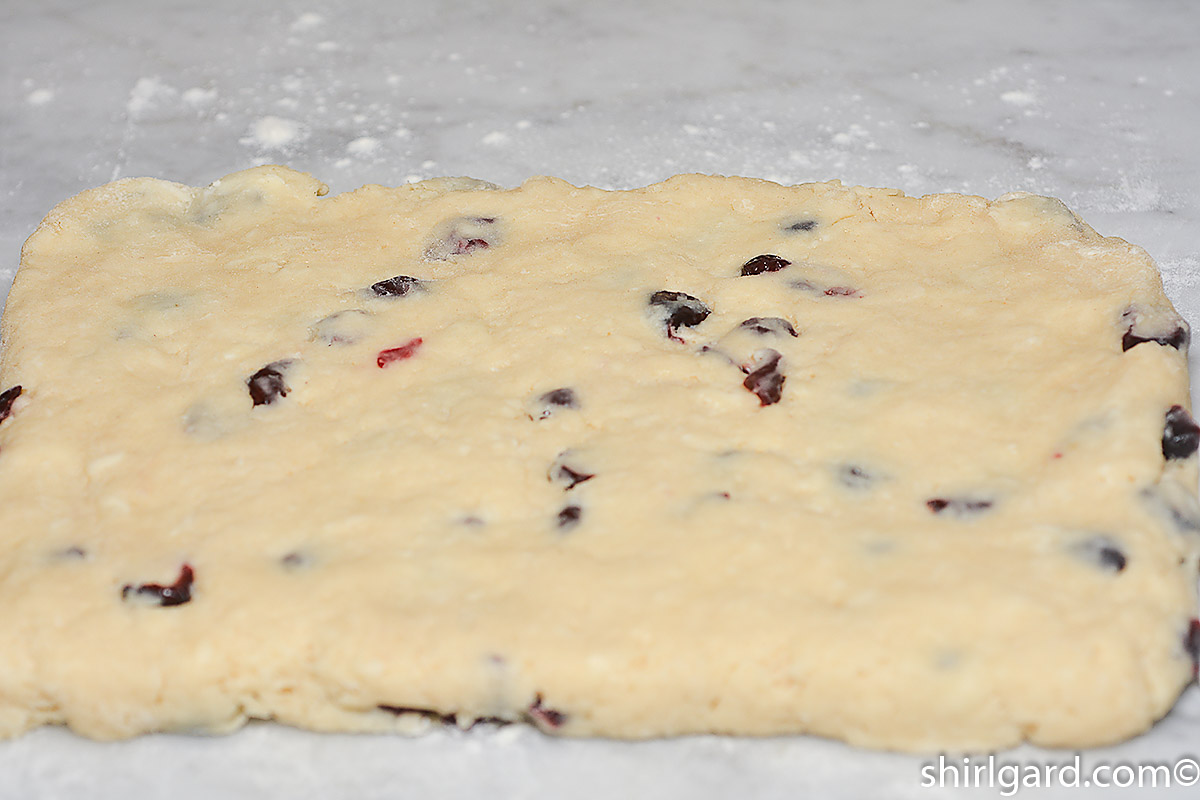
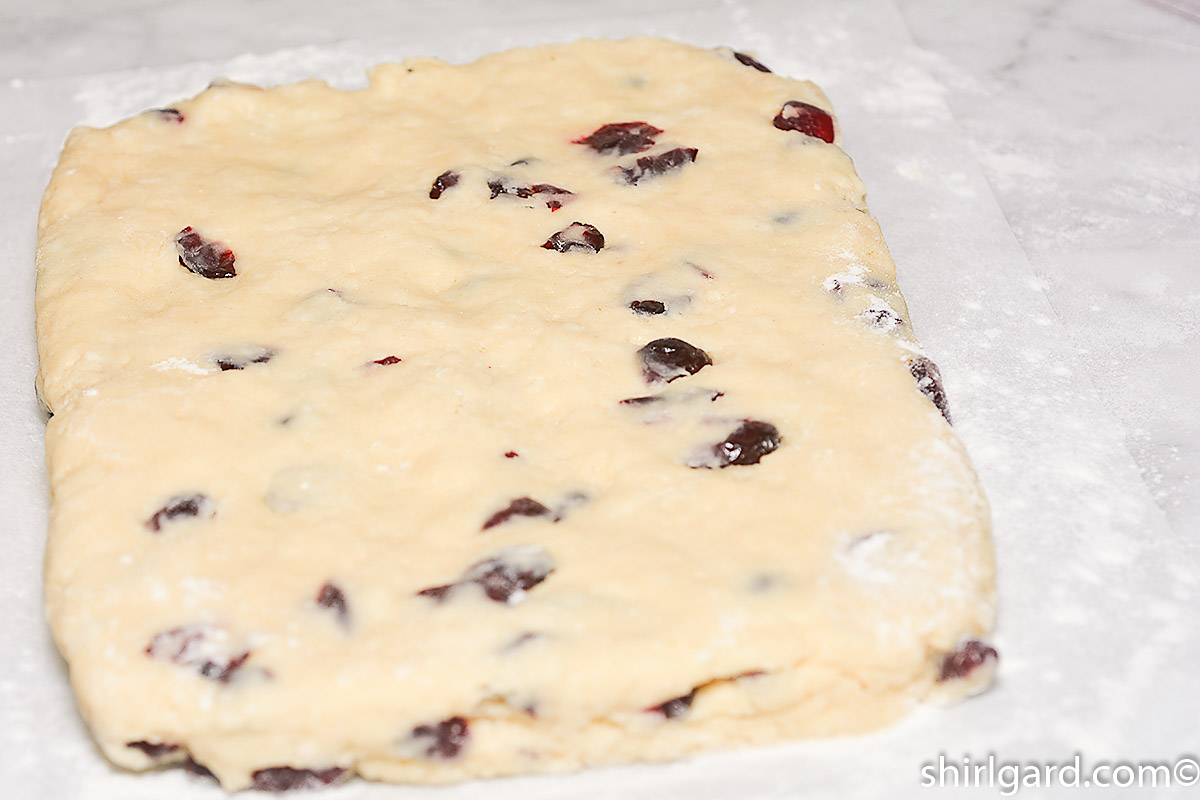
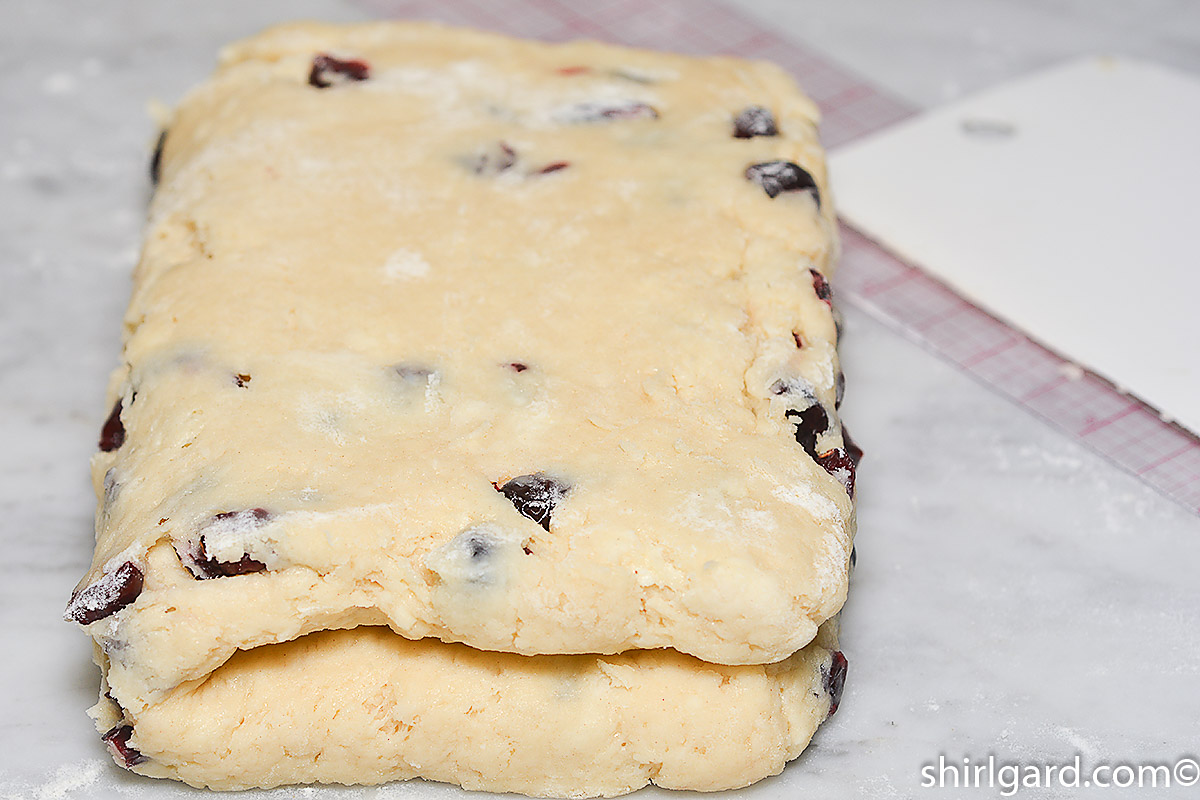
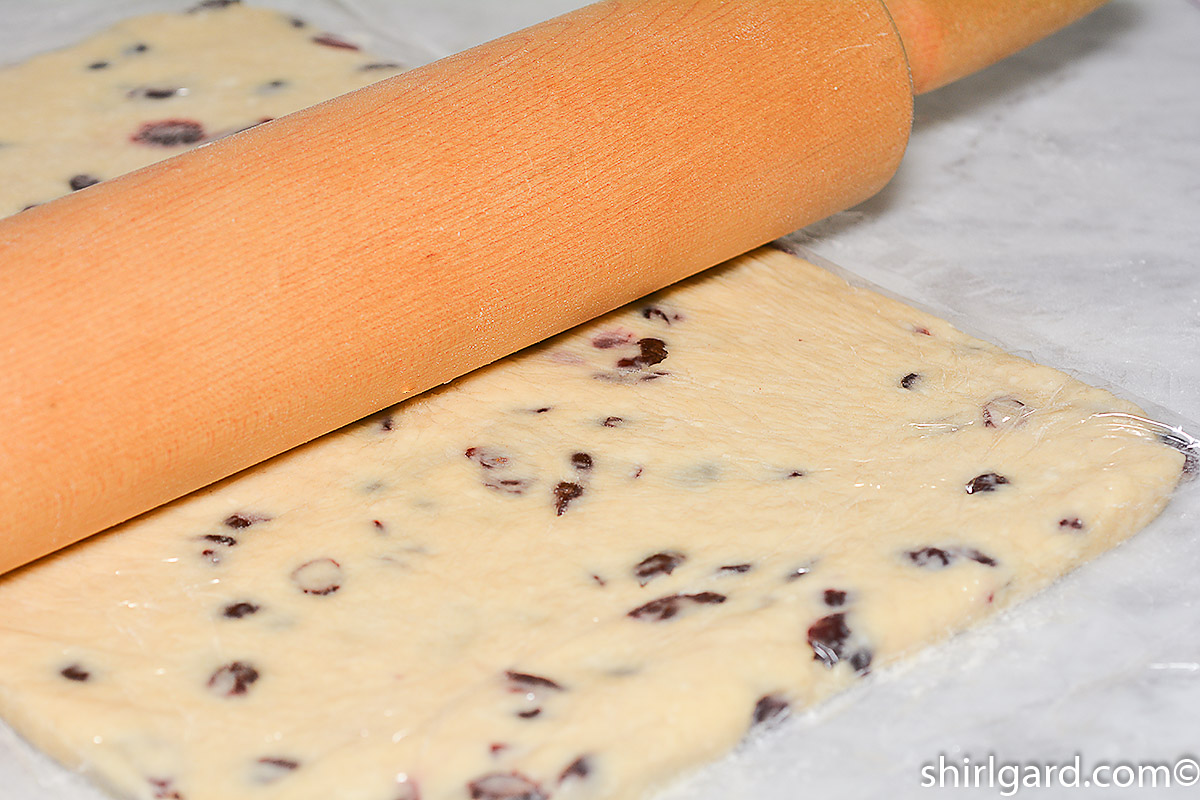
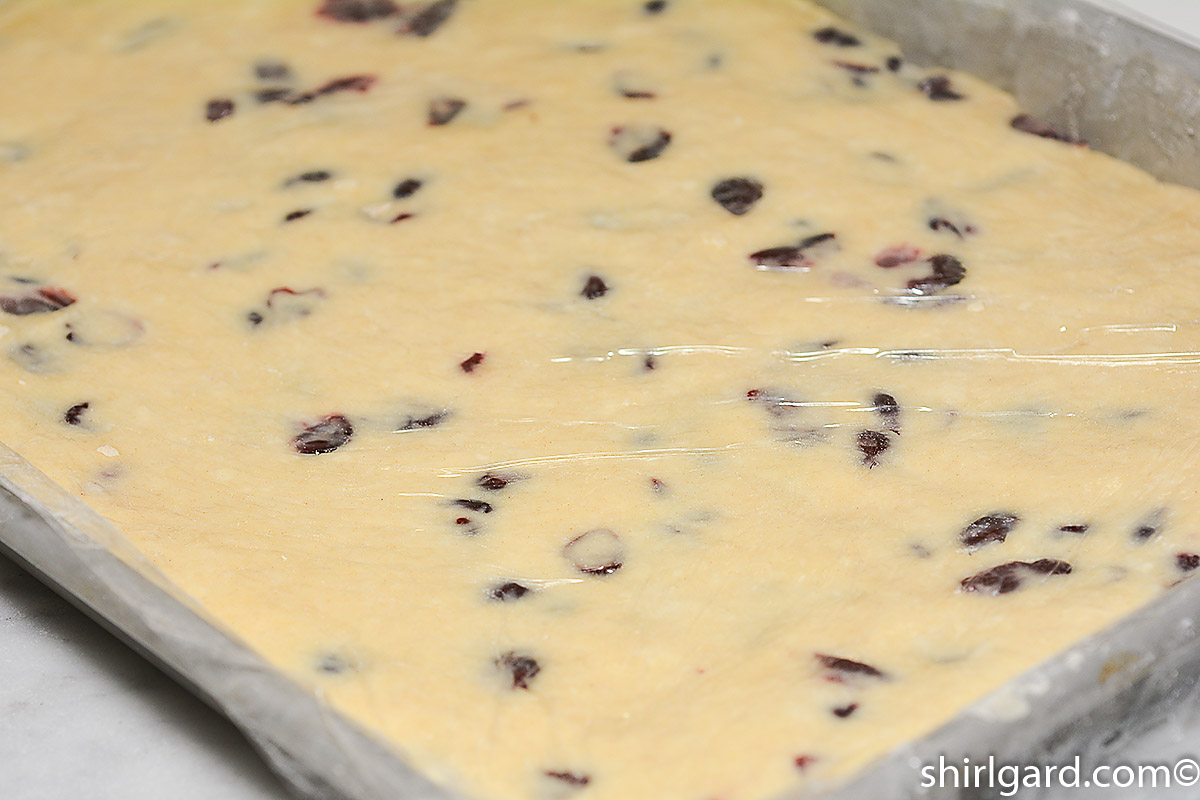

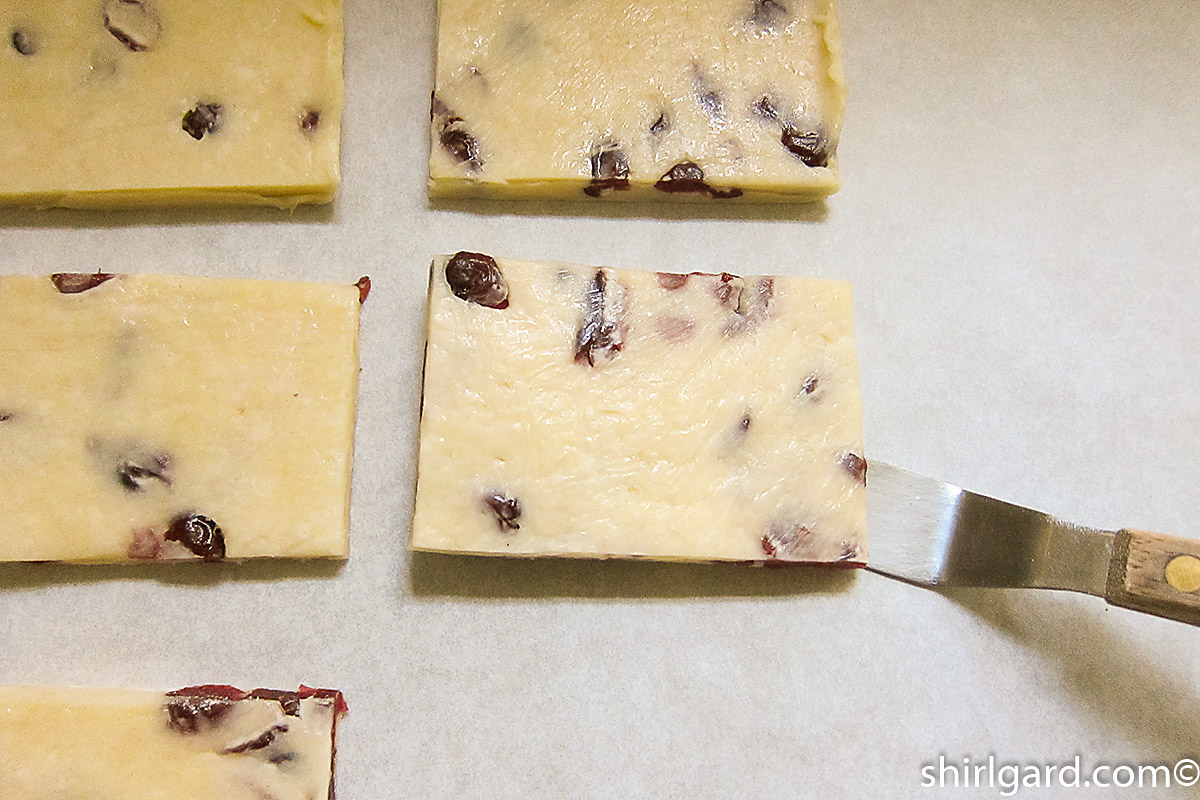
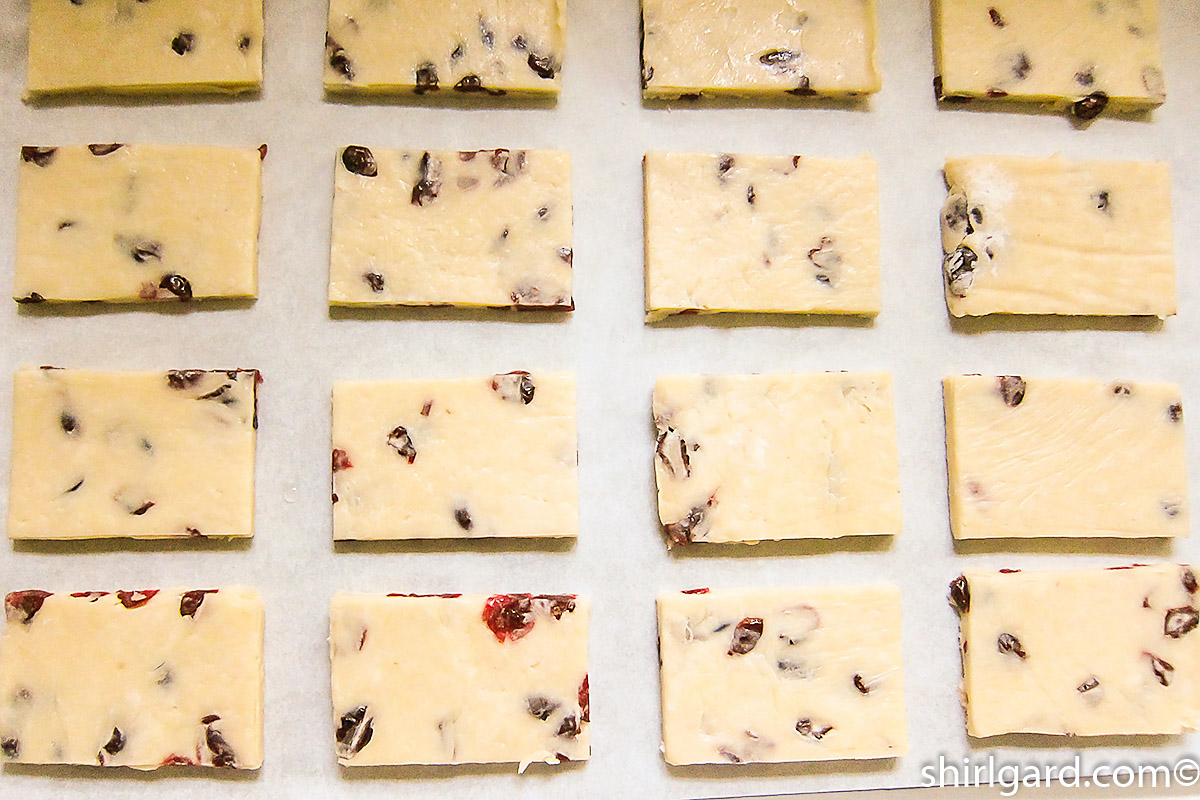
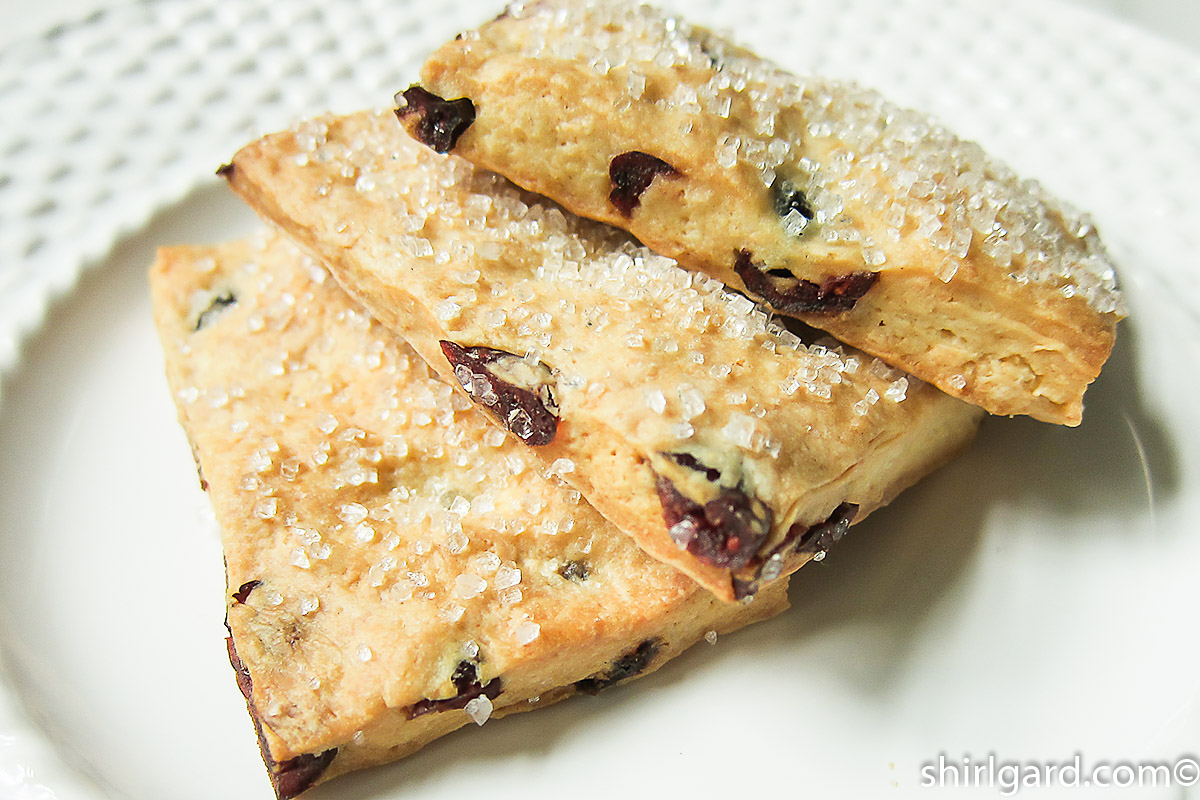
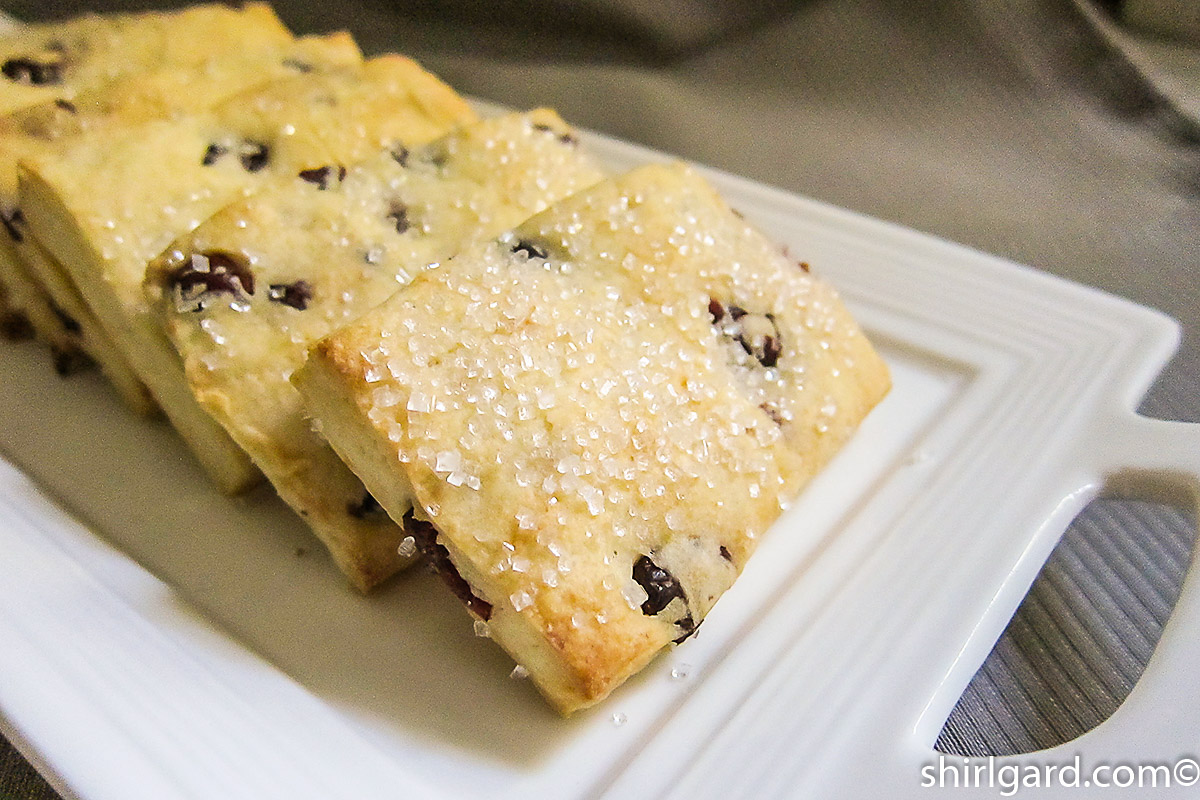
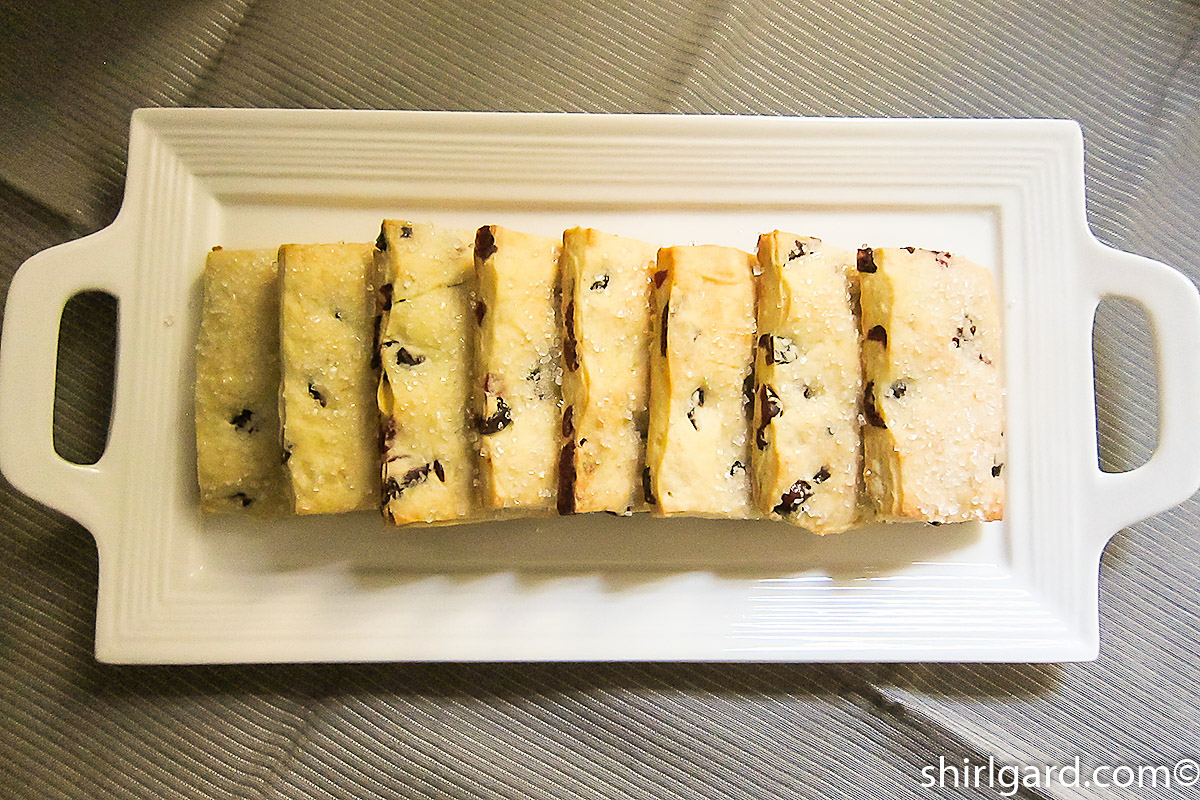
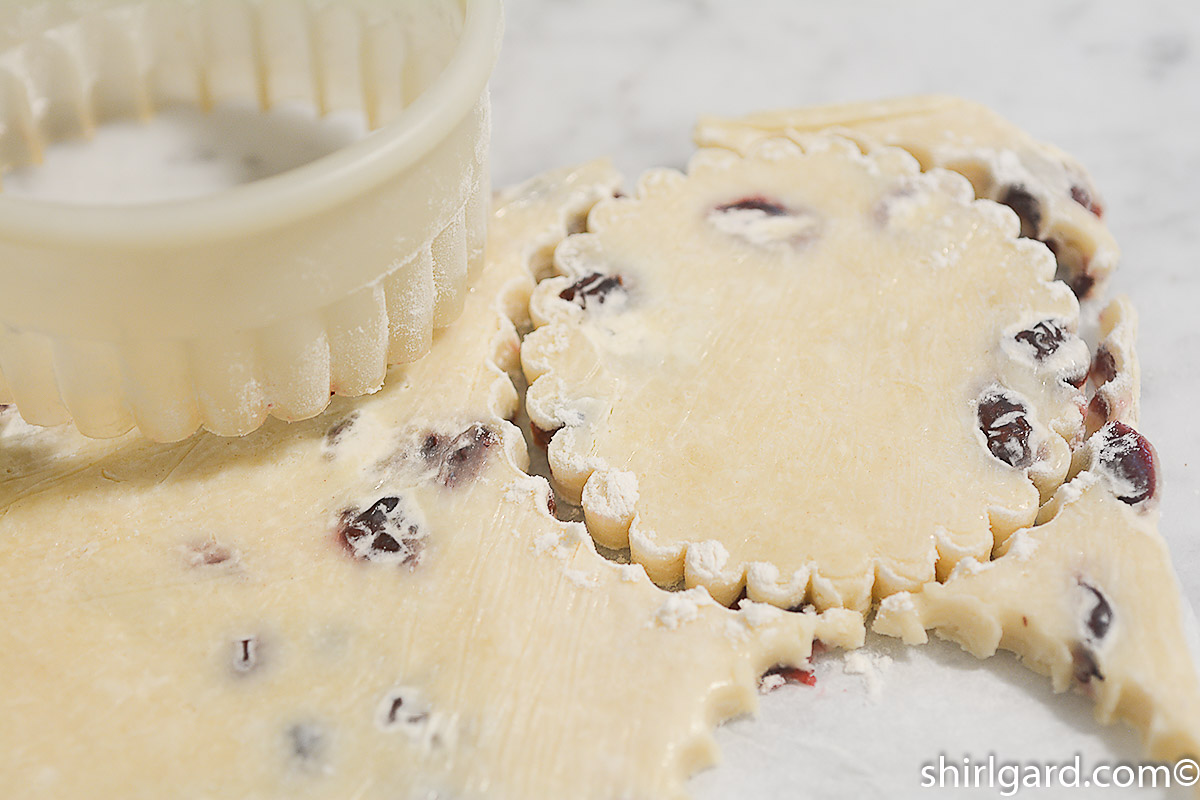
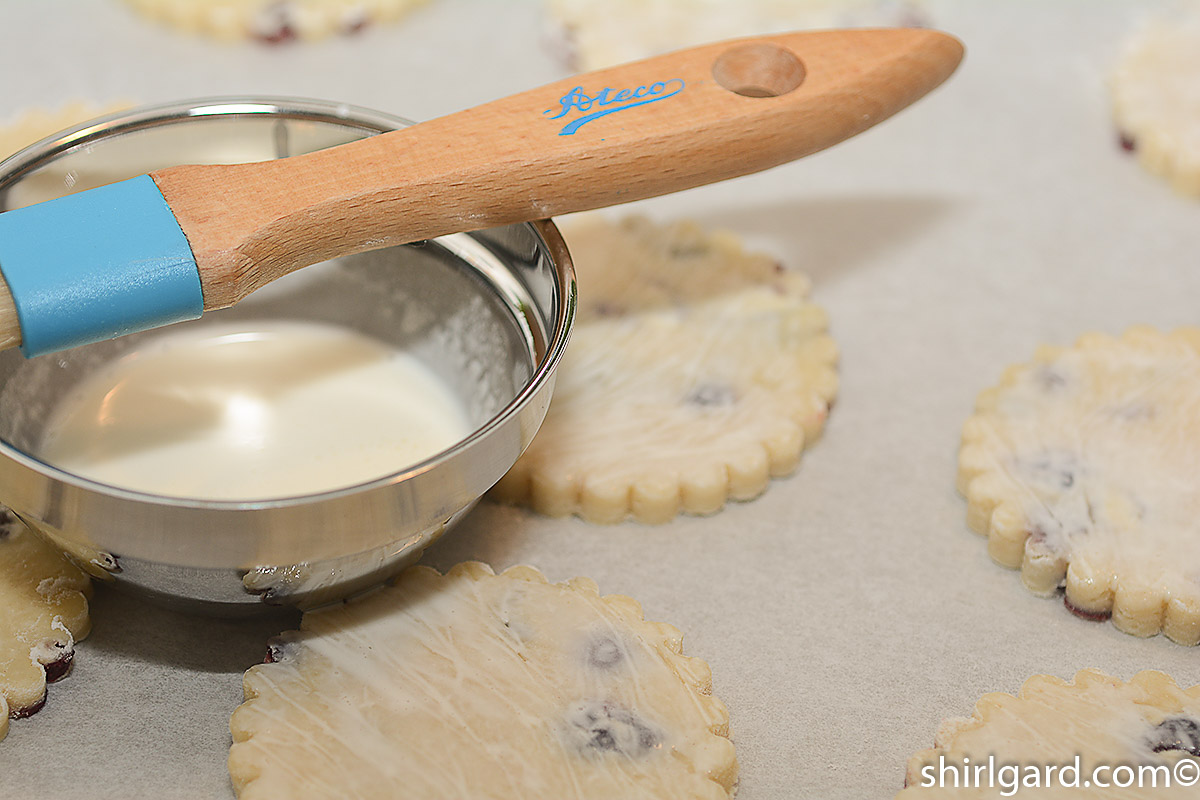
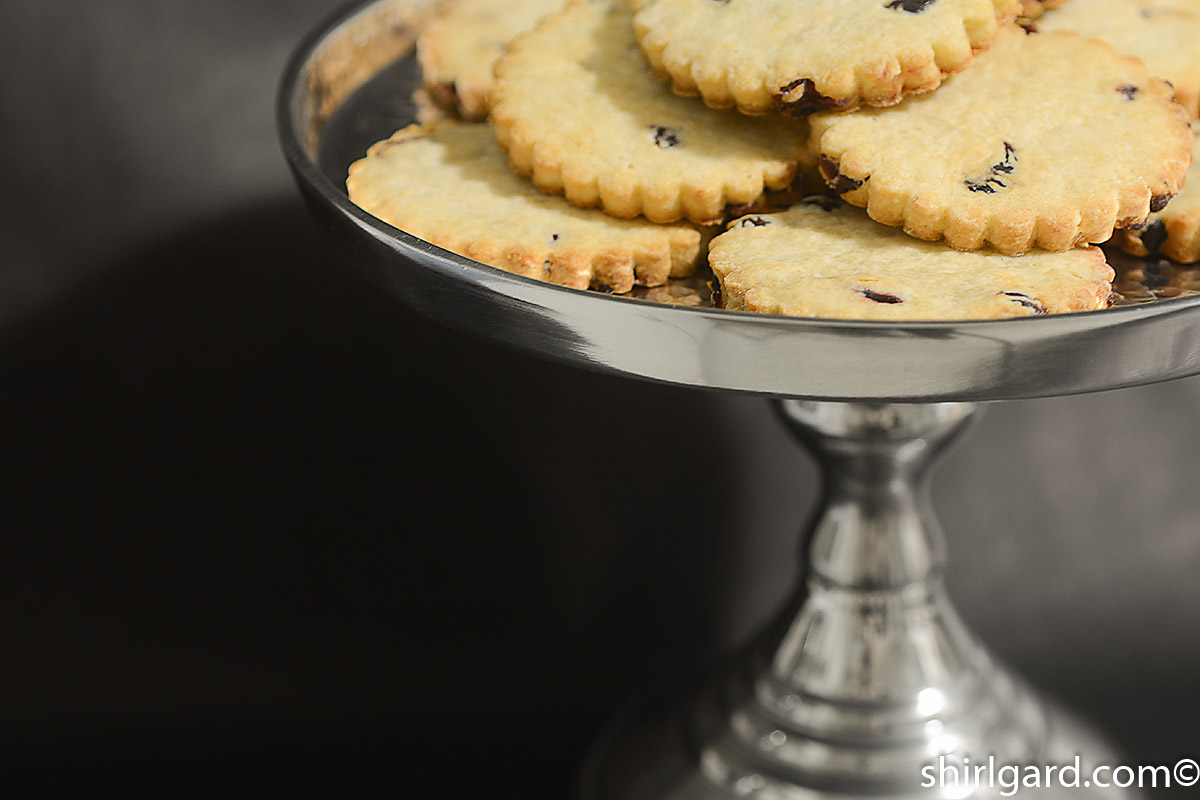
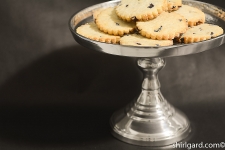
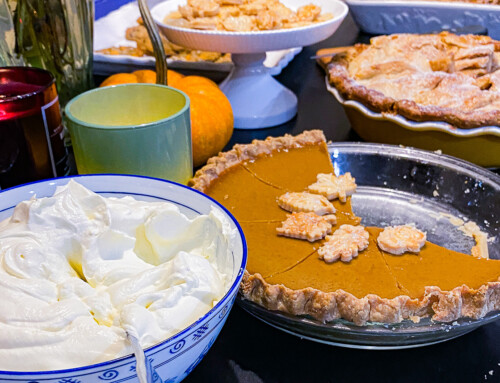
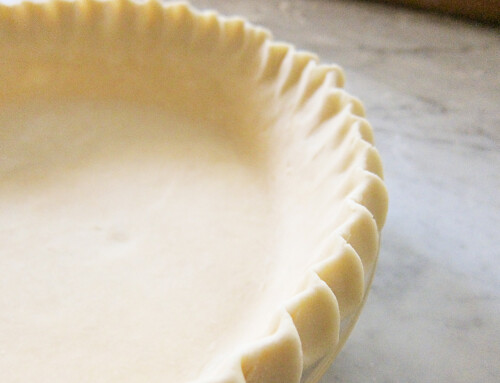
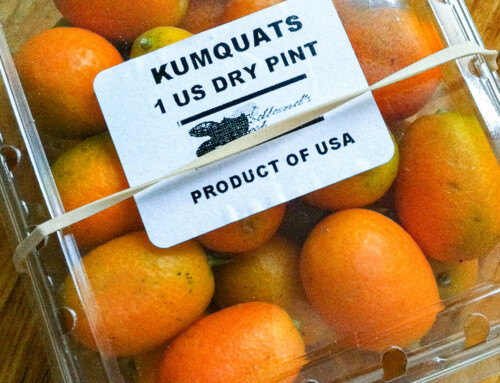
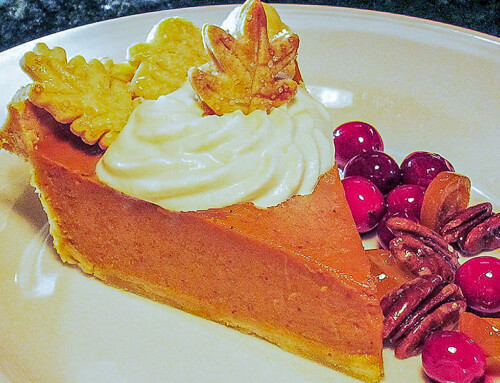
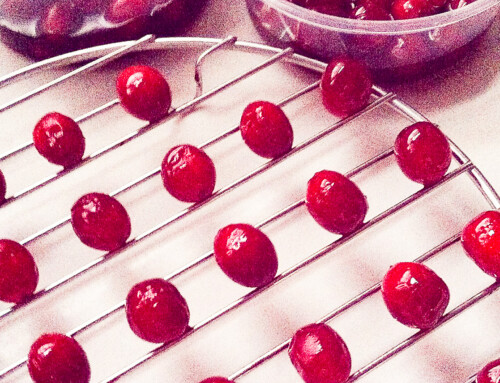
The small round scones remind me of a pastry I used to make when I was a volunteer baker at a local historic museum. The pastry was called “Derby Cakes”
Here is the recipe in its original form:
“Rub one pound of butter into two pounds of sifted flour, put one pound of currants, one pound of sugar, mix all together with half a pint of milk, one egg, two tea spoonfuls of pearlash, roll it out thin, cut it in round cakes and bake them.”
Anonymous. The Cook Not Mad or Rational Cookery (Kingston, Upper Canada: James MacFarlane, 1831).
It is fascinating to look at how recipes evolve over time and also to see how some ideas re-emerge.
I love food history, especially the history of baked goods, so I really appreciated your comments about a possible link between my “scone thins” and “Derby Cakes”. I also love really old cookbooks, and have a collection myself. This makes me want to do a little research on “Derby Cakes”. Are you located in Canada? Thanks for you comment.
Yes I live in Canada.I have no idea if scone thins are related to derby cakes but the small round ones you made look strikingly similar. Here is a link to the recipe I used that also gives a bit of history.
http://www.culinaryhistorians.ca/historic-recipes/Derby-or-Short-Cakes.pdf
Thanks for the link; I will check it out. Do you have a website?
No, I do not have a website. I am just a baking enthusiast. In Canada we have an organization called the Culinary Historians of Canada which has a website and some useful information. In the US I believe there are many organizations that are similar.
Happy Baking!
Happy Baking to you and thanks for your comments.
Made your Sally lunn buns ,great finished product.
Nice to have the detail you provide.
Scone question.
Have not seen a scone recipe that states an internal temp of 210….. most are from 190-200.
Are they not over baked?
Hi Harold,
Thank you for your nice comment on my Sally Lunn Buns. I love Sally Lunn dough; it is similar to Brioche but easier to make. So glad you had a good result. And thanks for your question.
Re: Scones
I’ve baked a lot of scones, both professionally and at home. In so doing, I’ve tried baking them at all different internal temperatures because I too have seen those recipes that call for them to to be baked to 190-200. Let me say, I will never recommend in a recipe something that I have not actually tried myself. When I bake scones to 200, I
find that they seem a little dough-y to me. 190 is even more dough-y. The ones I bake to an internal temperature of 209-210 are fully baked but not over-baked. I think where the 190-200 range comes from is for yeast breads, which are totally different from baking what are known as “quick breads,” those leavened with baking powder or baking soda. Anyway, I stand by my 210 internal temperature for scones.